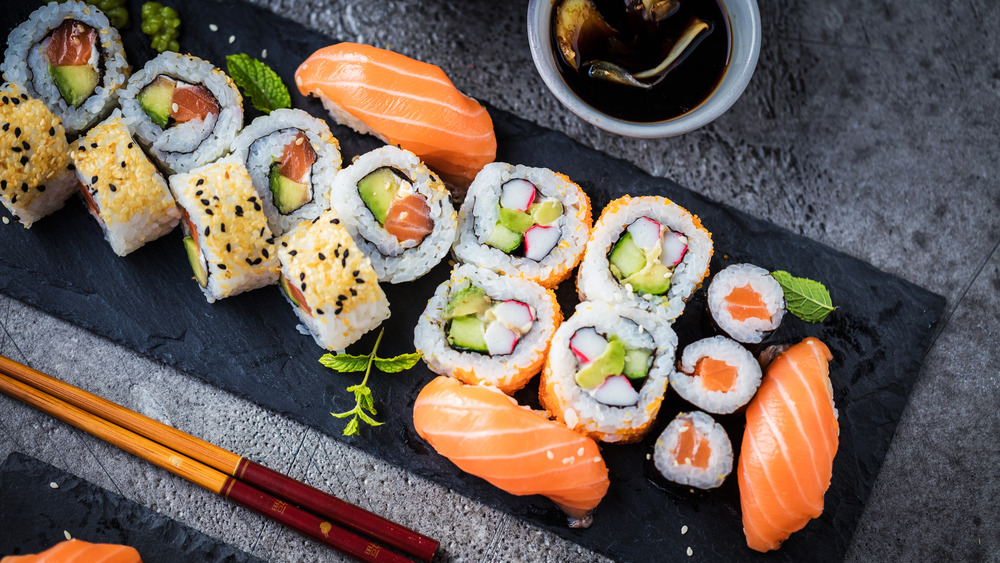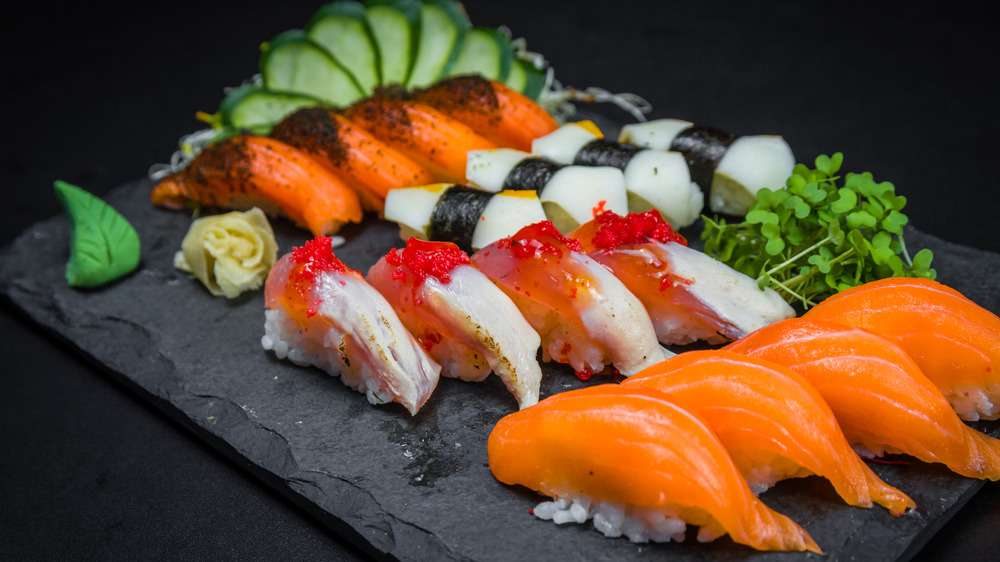How Authentic Sushi Is Different From The American Version
No one can argue that Americans love sushi. According to Mental Floss, nearly 4,000 sushi restaurants had spread across the US by 2017 and drew in $2 billion annually. With such a meteoric rise, sushi's transformation to fit a Western palette only feels natural. Our favorite rolls, like the California or spicy salmon roll, only came into existence beginning in the 1960s (via Insider). With so many changes made to the simple hosomaki combo of seaweed, rice, and fresh fish, a sushi enthusiast's head could spin if they want to track down an authentic Japanese culinary experience.
The differences between the American and Japanese sushi experience become apparent the moment you step foot in the restaurant. According to First We Feast, the idea of a sushi restaurant serving anything besides sushi seems ludicrous in Japan. While American patrons could expect ramen, katsu, and a variety of other hot dishes at a typical sushi joint in the States, Japanese sushi restaurants serve exclusively hand-rolled sushi with a limited menu of rolls. The businesses also tend to operate in smaller spaces than their US counterparts, with patrons lining a sushi bar and receiving recommendations from the chef. While these restaurants have maintained their popularity for generations in Japan, locals treat them similarly to how Americans view steakhouses and only visit sushi shops on special occasions.
American sushi vs. Japanese sushi
When you sit down to enjoy some sushi at an American establishment, you might feel inclined to use extra soy sauce and mix in a good helping of wasabi for a spicy kick. According to Insider, these steps rarely occur in Japanese sushi shops. Dipping rice in soy sauce causes the roll to fall apart, while adding extra wasabi compares to overseasoning a perfectly prepared steak — the chef has already perfected the dish before serving it, and altering the flavors takes away from the experience. Freshness lies at the core of the sushi experience in Japan, and as such, ordering one or two rolls at a time from the chef takes precedence over ordering a massive serving all at once (via Insider).
Freshness doesn't just apply to fish during a traditional sushi experience – gari, or pickled ginger, gets served alongside sushi to eat in between bites as a palette cleanser (via Insider). No one would dream of eating a bite of ginger simultaneously with a bite of sushi. Luckily, Japan has a much looser dining custom than America. Diners can pick up the sushi with their hands, and some sushi even lends itself to this manner of eating (via First We Feast). At the end of the day, love of sushi comes first, and whether you prefer the Japanese or American experience more, everyone can agree that the food won't disappear anytime soon.

